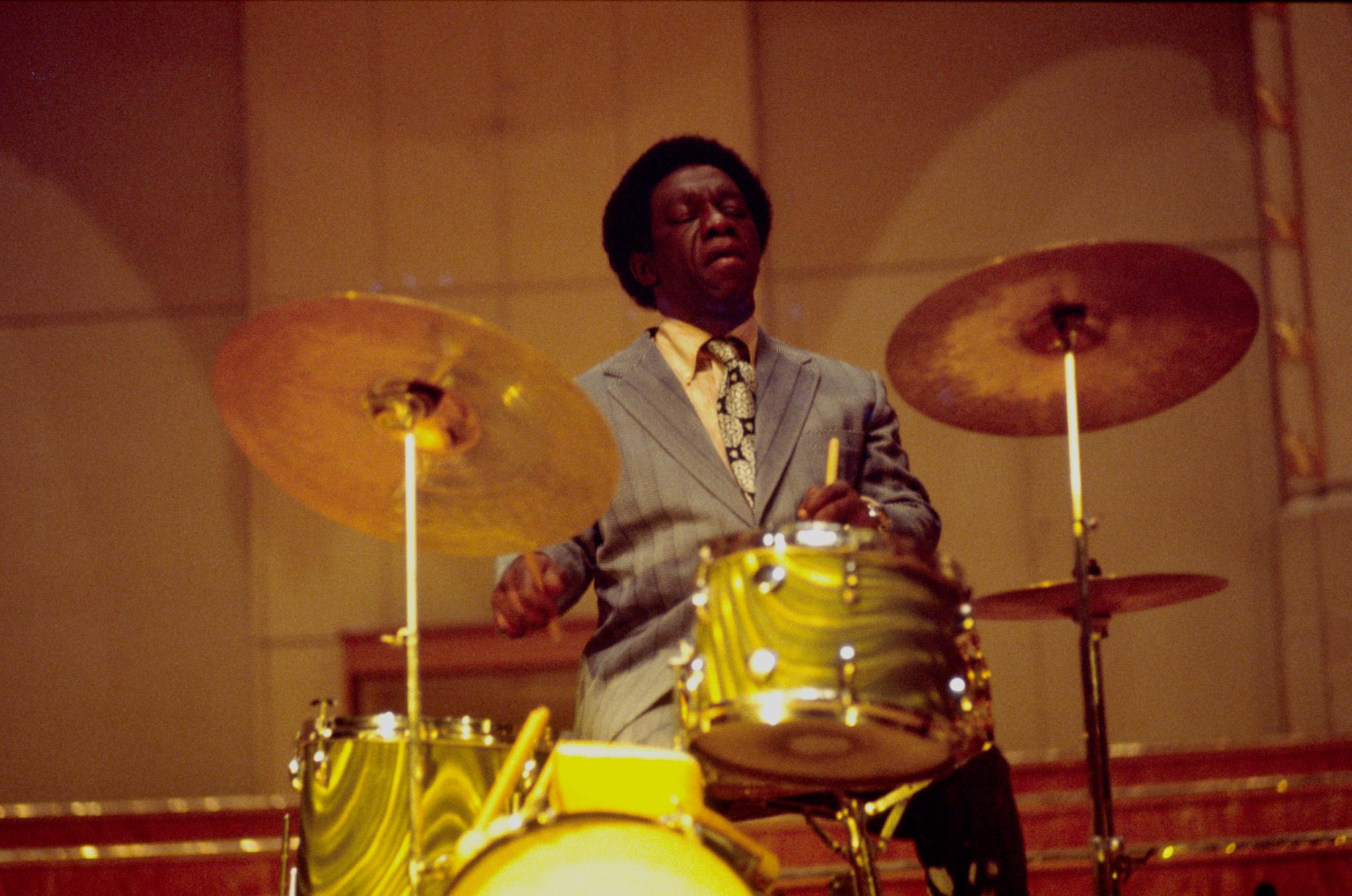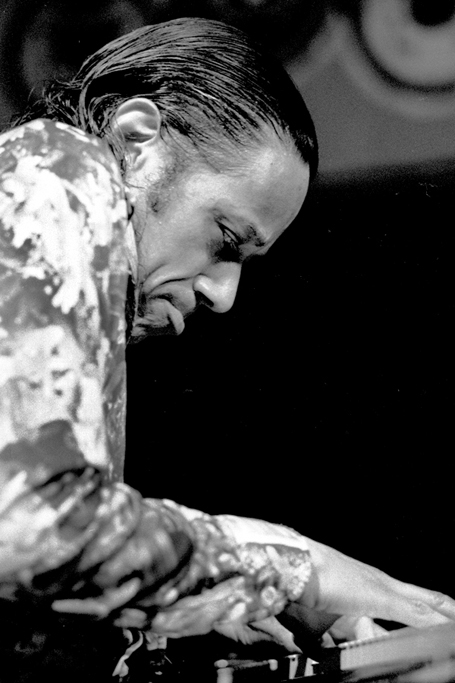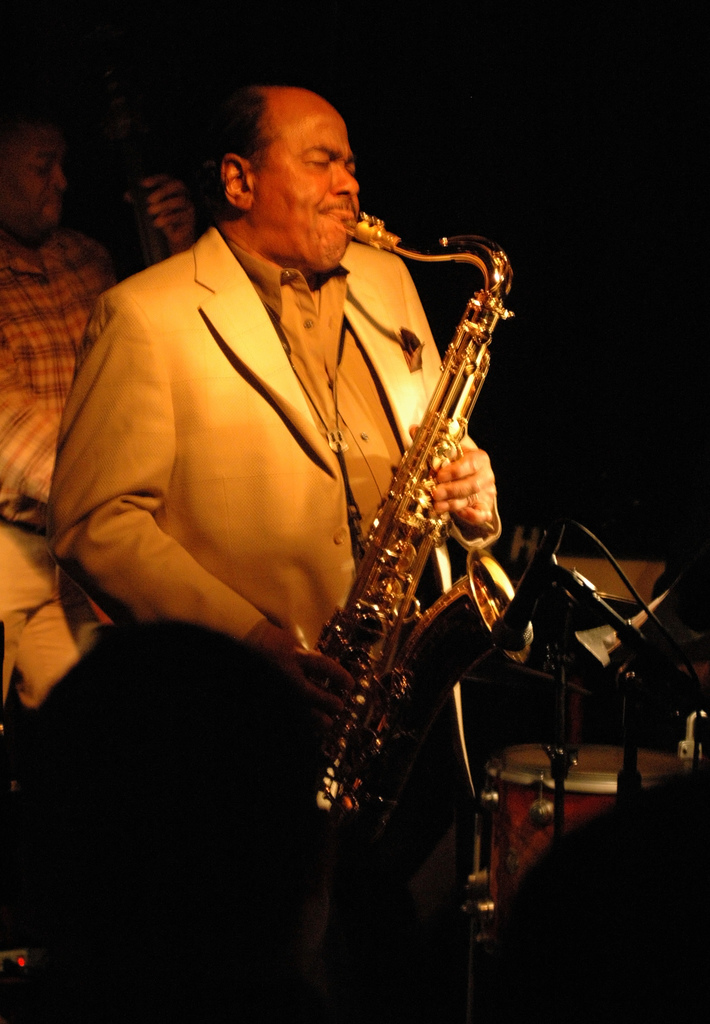|
Moanin'
''Art Blakey and the Jazz Messengers'', also called ''Moanin, is a studio album by Art Blakey and the Jazz Messengers recorded on October 30, 1958, and released on Blue Note Records, Blue Note later that year. Background This was Blakey's first album for Blue Note Records, Blue Note in several years, after a period of recording for a number of different labels, and marked both a homecoming and a fresh start. Originally the Vinyl record, LP was self-titled, but the instant popularity of the bluesy opening track, "Moanin' (song), Moanin'," composed by pianist Bobby Timmons, led to its becoming known by that title. Composition The rest of the originals are by saxophonist Benny Golson (who was not with the Jazz Messengers for long, this being the only U.S. album on which he is featured). "Are You Real?" is a propulsive 32-bar piece with a four-bar tag, featuring two-part writing for Golson and trumpeter Lee Morgan. "Along Came Betty" is a more lyrical, long-lined piece, almost se ... [...More Info...] [...Related Items...] OR: [Wikipedia] [Google] [Baidu] |
Bobby Timmons
Robert Henry Timmons (December 19, 1935 – March 1, 1974) was an American jazz pianist and composer. He was a sideman in Art Blakey's Jazz Messengers for two periods (July 1958 to September 1959; February 1960 to June 1961), between which he was part of Cannonball Adderley's band. Several of Timmons' compositions written when part of these bands – including " Moanin'", " Dat Dere", and "This Here" – enjoyed commercial success and brought him more attention. In the early and mid-1960s he led a series of piano trios that toured and recorded extensively. Timmons was strongly associated with the soul jazz style that he helped initiate. This link to apparently simple writing and playing, coupled with drug and alcohol addiction, led to a decline in his career. Timmons died, aged 38, from cirrhosis. Several critics have commented that his contribution to jazz remains undervalued. Early life Timmons was born in Philadelphia, Pennsylvania, the son of a minister.Kernfeld, Barr"Tim ... [...More Info...] [...Related Items...] OR: [Wikipedia] [Google] [Baidu] |
Art Blakey
Arthur Blakey (October 11, 1919 – October 16, 1990) was an American jazz drummer and bandleader. He was also known as Abdullah Ibn Buhaina after he converted to Islam for a short time in the late 1940s. Blakey made a name for himself in the 1940s in the big bands of Fletcher Henderson and Billy Eckstine. He then worked with bebop musicians Thelonious Monk, Charlie Parker, and Dizzy Gillespie. In the mid-1950s, Horace Silver and Blakey formed The Jazz Messengers, a group which he led for the next 35 years. The group was formed as a collective of contemporaries, but over the years the band became known as an incubator for young talent, including Freddie Hubbard, Wayne Shorter, Lee Morgan, Benny Golson, Kenny Dorham, Hank Mobley, Donald Byrd, Jackie McLean, Johnny Griffin, Curtis Fuller, Chuck Mangione, Chick Corea, Keith Jarrett, Cedar Walton, Woody Shaw, Terence Blanchard, and Wynton Marsalis. ''The Biographical Encyclopedia of Jazz'' calls the Jazz Messengers "the ... [...More Info...] [...Related Items...] OR: [Wikipedia] [Google] [Baidu] |
The Jazz Messengers
The Jazz Messengers were a jazz combo that existed for over thirty-five years beginning in the early 1950s as a collective, and ending when long-time leader and founding drummer Art Blakey died in 1990. Blakey led or co-led the group from the outset. "Art Blakey" and "Jazz Messengers" became synonymous over the years, though Blakey did lead non-Messenger recording sessions and played as a sideman for other groups throughout his career. The group evolved into a proving ground for young jazz talent. While veterans occasionally re-appeared in the group, by and large, each iteration of the Messengers included a lineup of new young players. Having the Messengers on one's resume was a rite of passage in the jazz world, and conveyed immediate bona fides. Many former members of the Jazz Messengers established careers as solo musicians, such as Lee Morgan, Benny Golson, Wayne Shorter, Freddie Hubbard, Bobby Timmons, Hank Mobley, Curtis Fuller, Cedar Walton, Billy Harper, Keith Jarret ... [...More Info...] [...Related Items...] OR: [Wikipedia] [Google] [Baidu] |
Moanin' (song)
"Moanin is a composition by Bobby Timmons, first recorded by Art Blakey's band the Jazz Messengers for the album of the same titleSeymour, Gene (2005), in Kirchner, Bill (ed.), '' The Oxford Companion to Jazz'', p. 380. Oxford University Press. that was released by Blue Note Records. Both the single and album are in the Grammy Hall of Fame. Composition "Moanin has a call and response melody. One account of its creation was given by Benny Golson, the tenor saxophonist in Blakey's band: Timmons had the opening eight bars, which he often played between tunes, but formed the complete song only after Golson encouraged him to add a bridge. It is played in F minor. Recordings and reception "Moanin was first recorded, by Art Blakey's band the Jazz Messengers, on October 30, 1958, with Lee Morgan on trumpet, Benny Golson on tenor sax, Bobby Timmons on piano, and Jymie Merritt on bass. It has been recorded numerous times and has become a jazz standard. Gary Giddins stated that the song "s ... [...More Info...] [...Related Items...] OR: [Wikipedia] [Google] [Baidu] |
Blues March
"Blues March" is a composition by Benny Golson. It was first recorded for Blue Mitchell's Riverside album '' Big 6'' on July 2 and 3, 1958,Yanow, Scot"Blue Mitchell: Big 6" AllMusic. Retrieved December 21, 2013. and has become a jazz standard.Blumenthal, Bob (2004) In ''The Complete Argo/Mercury Art Farmer/Benny Golson/Jazztet Sessions'' D liner notes p. 3. Mosaic. Composition and recording The composition is in 4/4 time.Feather, Leonard In ''Moanin' '' iner notes Blue Note. It was influenced by New Orleans marching bands, and "starts in long meter form and transforms back into regular time." Its straightforward harmony and separate sections make it ideal for improvisation. In the view of Leonard Feather, "the theme, with its slight bugle-call orientation, has a period quality that ties the work together". Although some sources state that its first recorded version is the well known one by Art Blakey's band on his album ''Moanin'''Edelstein, Paul"Art Farmer/Benny Golson: Blues ... [...More Info...] [...Related Items...] OR: [Wikipedia] [Google] [Baidu] |
Hard Bop
Hard bop is a subgenre of jazz that is an extension of bebop (or "bop") music. Journalists and record companies began using the term in the mid-1950s to describe a new current within jazz that incorporated influences from rhythm and blues, gospel music, and blues, especially in saxophone and piano playing. David H. Rosenthal contends in his book ''Hard Bop'' that the genre is, to a large degree, the natural creation of a generation of African-American musicians who grew up at a time when bop and rhythm and blues were the dominant forms of black American music. Prominent hard bop musicians included Horace Silver, Clifford Brown, Charles Mingus, Art Blakey, Cannonball Adderley, Miles Davis, John Coltrane, Hank Mobley, Thelonious Monk, Lee Morgan, Wes Montgomery, Pat Martino and others. Characteristics Hard bop is sometimes referred to as "funky hard bop". The "funky" label refers to the rollicking, rhythmic feeling associated with the style. The descriptor is also used to de ... [...More Info...] [...Related Items...] OR: [Wikipedia] [Google] [Baidu] |
Lambert, Hendricks & Ross
Lambert, Hendricks & Ross were an American vocalese trio formed by jazz vocalists Dave Lambert, Jon Hendricks and Annie Ross. From 1962 to 1964, Ross was replaced by vocalist Yolande Bavan. History The group formed in 1957 and recorded their first album ''Sing a Song of Basie'' (1958) for ABC-Paramount Records. The album featured versions of Count Basie standards and was successful enough that the Count Basie Orchestra collaborated with them on ''Sing Along With Basie'' (1959). ''Sing a Song of Basie'' was awarded a Grammy Hall of Fame Award in 1998. Beginning in 1959, the trio recorded three LPs with Columbia Records. They recorded a version of Ross's 1952 song " Twisted", featuring her lyrics set to a Wardell Gray melody. Their ''High Flying'' album won a Grammy Award for Best Performance by a Vocal Group in 1962. Lambert, Hendricks & Ross were voted Best Vocal Group in the ''DownBeat'' Readers Poll from 1959 to 1963. Before she married Jackie Paris in 1961, Canadian jazz ... [...More Info...] [...Related Items...] OR: [Wikipedia] [Google] [Baidu] |
Jon Hendricks
John Carl Hendricks (September 16, 1921 – November 22, 2017), known professionally as Jon Hendricks, was an American jazz lyricist and singer. He is one of the originators of vocalese, which adds lyrics to existing instrumental songs and replaces many instruments with vocalists, such as the big-band arrangements of Duke Ellington and Count Basie. He is considered one of the best practitioners of scat singing, which involves vocal jazz soloing. Jazz critic and historian Leonard Feather called him the "Poet Laureate of Jazz", while ''Time'' dubbed him the "James Joyce of Jive". Al Jarreau called him "pound-for-pound the best jazz singer on the planet—maybe that's ever been". Early years Born in 1921 in Newark, Ohio, Hendricks and his 14 siblings moved many times, following their father's assignments as an AME pastor, before settling permanently in Toledo. The house was often full of visiting jazz musicians, for whom Jon's mother provided meals. Hendricks began his si ... [...More Info...] [...Related Items...] OR: [Wikipedia] [Google] [Baidu] |
Benny Golson
Benny Golson (January 25, 1929 – September 21, 2024) was an American bebop and hard bop jazz tenor saxophonist, composer, and arranger. He came to prominence with the big bands of Lionel Hampton and Dizzy Gillespie, more as a writer than a performer, before launching his solo career. Golson was known for co-founding and co-leading The Jazztet with trumpeter Art Farmer in 1959. From the late 1960s through the 1970s Golson was in demand as an arranger for film and television and thus was less active as a performer, but he and Farmer re-formed the Jazztet in 1982. Many of Golson's compositions have become jazz standards, including " I Remember Clifford", " Blues March", " Stablemates", " Whisper Not", "Along Came Betty", and "Killer Joe". He is regarded as "one of the most significant contributors" to the development of hard bop jazz, and was a recipient of a Grammy Trustees Award in 2021. Early life and education He was born Benny Golson in Philadelphia, Pennsylvania, on Ja ... [...More Info...] [...Related Items...] OR: [Wikipedia] [Google] [Baidu] |
Lee Morgan
Edward Lee Morgan (July 10, 1938 – February 19, 1972) was an American jazz trumpeter and composer. One of the key hard bop musicians of the 1960s and a cornerstone of the Blue Note Records, Blue Note label, Morgan came to prominence in his late teens, recording with bandleaders like John Coltrane, Curtis Fuller, Dizzy Gillespie, Hank Mobley and Wayne Shorter, and playing in Art Blakey's The Jazz Messengers, Jazz Messengers. Morgan stayed with Blakey until 1961 and started to record as leader in the late '50s. Morgan's solo recordings often alternated between conventional hard bop sessions and more adventurous post-bop and Avant-garde jazz, avant-garde experiments, many of which did not see release during his lifetime. His composition "The Sidewinder (song), The Sidewinder", on the The Sidewinder, album of the same name, became a surprise crossover hit on the pop and R&B charts in 1964. After a second stint in Blakey's band, Morgan continued to work prolifically as both a leade ... [...More Info...] [...Related Items...] OR: [Wikipedia] [Google] [Baidu] |




